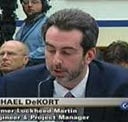Simulation Gaming Engines cannot get you to a legitimate L4 Autonomous Vehicle
As the avoidable tragedies mount and hype dwindles it is good to see more of an emphasis on simulation. Hopefully the industry will soon realize 99.9% of public shadow and safety driving needs to move to proper simulation. “Proper” being the key word here.
In order for simulation to reliably and accurately simulate the real-world properly, the vehicle, tire, road, sensor, environment and other models need to be precise. As does the real-time operation of these models especially when the scenarios are large, complex and heavily loaded with these complex models. If they are not the Planning system will have a flawed expectation of the real-world. This will manifest itself as braking, acceleration, handling and other real-world flaws that will lead to tragedies or not avoid them as well as they should be. Worse of all this will largely be hidden to the engineering teams causing false confidence. Gaming engine-based systems have these issues. The cause of this is their use of a non-deterministic architecture. This causes timing problems that limit real-time capability. Gaming companies lower the impact of these issues by limiting model fidelity, the number of models being used, the size of the play area and how many environmental features are visual only versus having physics (math model) associated with them. In a game these issues are not a problem. In autonomous vehicle simulation they are. (Every simulation system and product I am aware of in the AV industry is based on gaming engines or similar architectures as far as I am aware. The cloud-based systems are by far the most challenged, especially when connected to a full-motion DIL simulator. Which is a must for critical scenarios where motion cues are critical to learning and testing.)
The solution is to use foundational executives or architectures (engines) based on aerospace/DoD simulation technology. (Yes, DoD simulated urban war games are analogous to the complexity needed here — even more so. They operate in city streets with the same complexity public AV makers have and they must deal with entities driving or operating off the road, shooting each other and often their models are far more complex.) These industries solved this problem decades ago by using shared/global memory and using deterministic architectures. Unity Technology, the leading game-engine supplier in the driverless industry is not only well aware of these issues, they acknowledge them. It is for this reason we are using Unity’s rendering engine and working together to provide a system that provides all the scenarios and simulation needed to develop and test autonomous vehicles to get to a legitimate L4. And most importantly that can be done well within our lifetime, won’t drive companies into bankruptcy and will not harm people needlessly.
Please find more information in my articles below.
Using the Real World is better than Proper Simulation for Autonomous Vehicle Development — NONSENSE
All the Autonomous Vehicle makers combined would not get remotely close to L4
The Autonomous Vehicle Podcast — Featured Guest https://www.autonomousvehiclespodcast.com/
SAE Autonomous Vehicle Engineering Magazine-End Public Shadow Driving
Common Misconceptions about Aerospace/DoD/FAA Simulation for Autonomous Vehicles
The Hype of Geofencing for Autonomous Vehicles
My name is Michael DeKort — I am a former system engineer, engineering and program manager for Lockheed Martin. I worked in aircraft simulation, the software engineering manager for all of NORAD, the Aegis Weapon System, and on C4ISR for DHS.
I am a member of the SAE On-Road Autonomous Driving Validation & Verification Task Force and was recently asked by SAE to lead an effort to establish a new Modeling and Simulation group.
I am a stakeholder for UL4600 — Creating AV Safety Guidelines.
I have also been presented the IEEE Barus Ethics Award and am on the IEEE Artificial Intelligence & Autonomous Systems Policy Committee (AI&ASPC)
My company is Dactle
